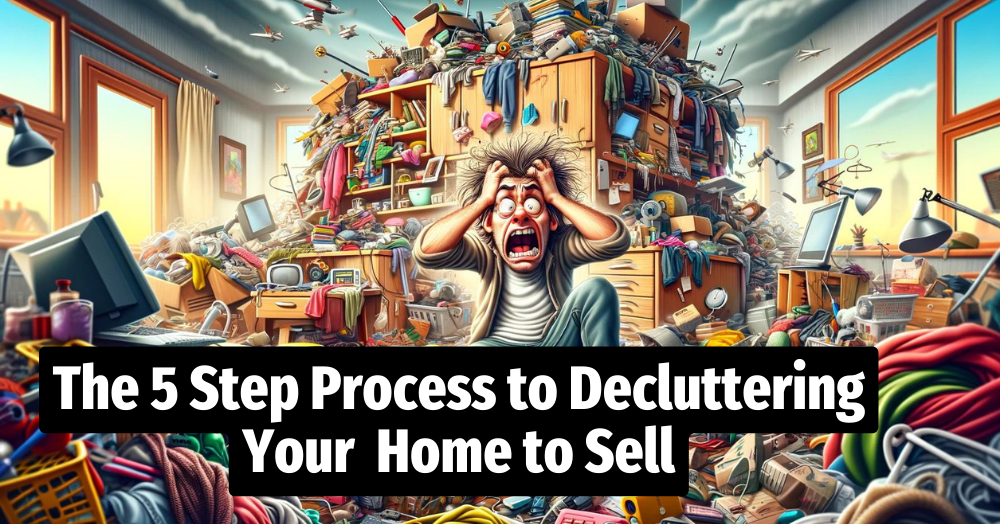Homeowners can create a more enjoyable living environment...
This is our five-step decluttering guide to greatly aid homeowners in both enhancing their living space and boosting their property's appeal to potential buyers.
Here’s our structured plan that progresses from simple to more challenging tasks:
Step 1: Start with Surface Clutter
Begin by tackling the visible clutter on surfaces such as tables, kitchen worksurfaces, and shelves. This initial step creates immediate visual improvement and sets a positive momentum. Remove any items that don't serve a functional or aesthetic purpose in the room. Consider implementing storage solutions like decorative baskets or trays to neatly organise everyday items. This phase not only simplifies your space but also makes it more inviting to potential buyers of your home, showcasing the property's true potential without distractions.
Step 2: Organise Wardrobes, Bookcases & Cupboards
Next, focus on internal storage areas like wardrobes, bookcases and cupboards. Buyers will look inside these spaces to gauge storage capacity, so it’s crucial they appear spacious and well-organised. If you are at or near capacity, it will give the impression that there’s not enough space for them to put their items in. Start by decluttering clothes and items you no longer use or need. Adopting a minimalist approach by keeping only what you love and use regularly can significantly free up space. Use organisational tools like shelf dividers, storage boxes, and hanging organisers to maximise efficiency. Bookcases need to be no more than 75% capacity.
Step 3: Address the Paperwork
Paper clutter can be overwhelming yet addressing it can significantly impact the overall feel of your home. Start by gathering all loose papers, bills, and documents. Sort them into categories such as 'Keep', 'Shred' & 'Recycle'. For essential documents, create a filing system that's easy to maintain. Digitising what you can also save space and reduce physical clutter. This step not only clears physical space but also helps in reducing mental clutter, making your home feel more serene and controlled.
Step 4: Personal Items
Personal items can make your house feel like a home, but they can also make it harder for potential buyers to envision themselves living there. Carefully go through personal photographs, heirlooms, and collectables. This step is crucial for depersonalising your space, making it a blank canvas for buyers. Remember, they are buying THEIR next home, not yours.
Step 5: Re-evaluate Furniture & Layout
The final and more challenging step involves reassessing your furniture and the overall layout of your home. Bulky furniture or too much furniture can make spaces appear smaller. Consider the flow of each room and remove or replace items that disrupt this flow or serve no functional purpose. Sometimes, simply rearranging furniture can significantly enhance the sense of space & functionality in a room. This step not only optimises your living space but also showcases your property's potential to buyers, making it feel more spacious and inviting.
Can you think of anything else, do share in the comments!
By following these steps, homeowners can create a more enjoyable living environment for themselves while also increasing their property's appeal and market value. Each step not only contributes to a decluttered and organised home but also to a property that's more attractive to potential buyers, potentially leading to a quicker sale and a higher selling price.

